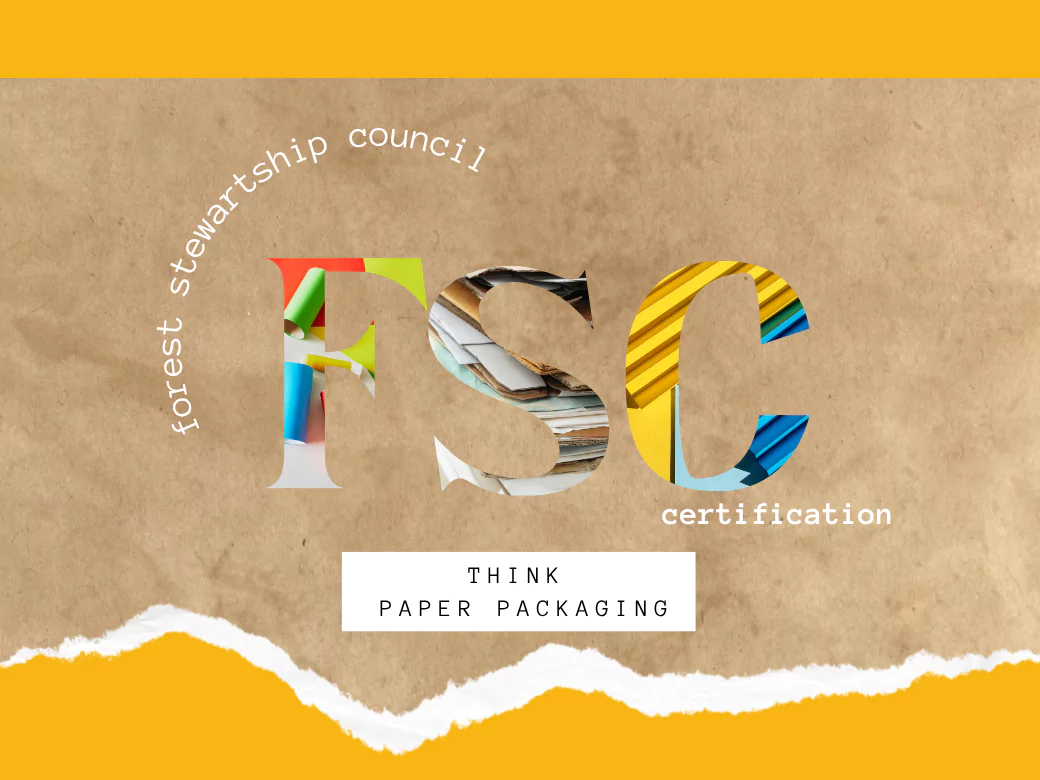As consumers and businesses increasingly prioritize environmental responsibility, FSC (Forest Stewardship Council) certification has emerged as a cornerstone of sustainable packaging solutions. By ensuring that paper and wood products come from responsibly managed forests, FSC certification offers a path toward reducing deforestation, preserving biodiversity, and fostering ethical practices.
But the benefits of FSC-certified materials go far beyond sustainability; they extend to the versatility of packaging products and opportunities for ongoing innovation.
Why FSC Matters in Packaging
FSC certification provides a globally recognized standard for forest management, with criteria ensuring:
• Forest Preservation: FSC-certified forests maintain biodiversity, protect water resources, and prevent habitat destruction.
• Ethical Practices: Certification supports the rights of workers and local communities while promoting fair wages and safe working conditions.
• Traceability: FSC-certified products are tracked throughout the supply chain, ensuring transparency from the forest to the consumer.
For businesses, using FSC-certified packaging is more than just a good environmental practice—it’s a clear message to customers that sustainability is a priority.

Packaging Products That Benefit from FSC Certification
The versatility of FSC-certified materials has made them a critical component in various packaging formats. Here’s a look at how different products benefit:
1. Shipping Cartons
Durable and recyclable, FSC-certified corrugated shipping cartons provide an eco-friendly way to deliver products while maintaining strength and quality. Subscription brands, e-commerce businesses, and retailers increasingly favor these cartons to meet sustainability goals.
2. Paperboard Boxes
Ideal for personal care, nutraceuticals, and luxury goods, FSC-certified paperboard offers a high-quality, printable surface for branding while reducing environmental impact.
3. Flexible Paper Packaging
Paper pouches and wraps made from FSC-certified materials serve as alternatives to plastic-based flexible packaging. They are especially beneficial for cosmetics, consumer goods products, and more.
4. Labels and Inserts
FSC-certified paper can be used for product labels, tags, and inserts, ensuring that every component of the packaging aligns with sustainable practices.
5. Specialty Packaging
High-end packaging, such as rigid boxes for luxury goods or wine carriers, benefits from FSC-certified materials that combine premium aesthetics with responsible sourcing.
Opportunities for Innovation
While FSC certification has already transformed packaging, there are areas where continued innovation can drive even greater impact:
1. Advancing Barrier Coatings
To replace plastic or wax coatings, innovations in compostable or water-based barrier technologies for FSC-certified paper can expand its use in food and beverage packaging.
2. Lightweighting
Developing thinner yet strong FSC-certified paper products can reduce material usage and transportation emissions while maintaining packaging integrity.
3. Digital Printing Integration
Advancements in digital printing for FSC-certified materials can enable more flexible, cost-effective customization, particularly for small-to-medium-sized brands.
4. Circularity Programs
Creating programs to recycle and repurpose FSC-certified packaging into new products can help close the loop and promote a circular economy.
5. Hybrid Packaging Solutions
Innovative combinations of FSC-certified paper with other sustainable materials, such as aluminum or glass, can offer robust, multi-functional solutions for various industries.

The Road Ahead
FSC certification has proven to be a valuable standard for sustainable packaging, but its full potential lies in our ability to innovate further. As packaging professionals, brand owners, and sustainability advocates, we must continue exploring ways to enhance performance, reduce environmental impact, and adapt FSC-certified materials to meet evolving market demands.
Every decision we make—from choosing responsibly sourced materials to driving technological advancements—contributes to a greener future. Let’s keep pushing boundaries, one FSC-certified package at a time.
How is your organization integrating FSC-certified materials into its packaging? Where do you see opportunities for innovation?

